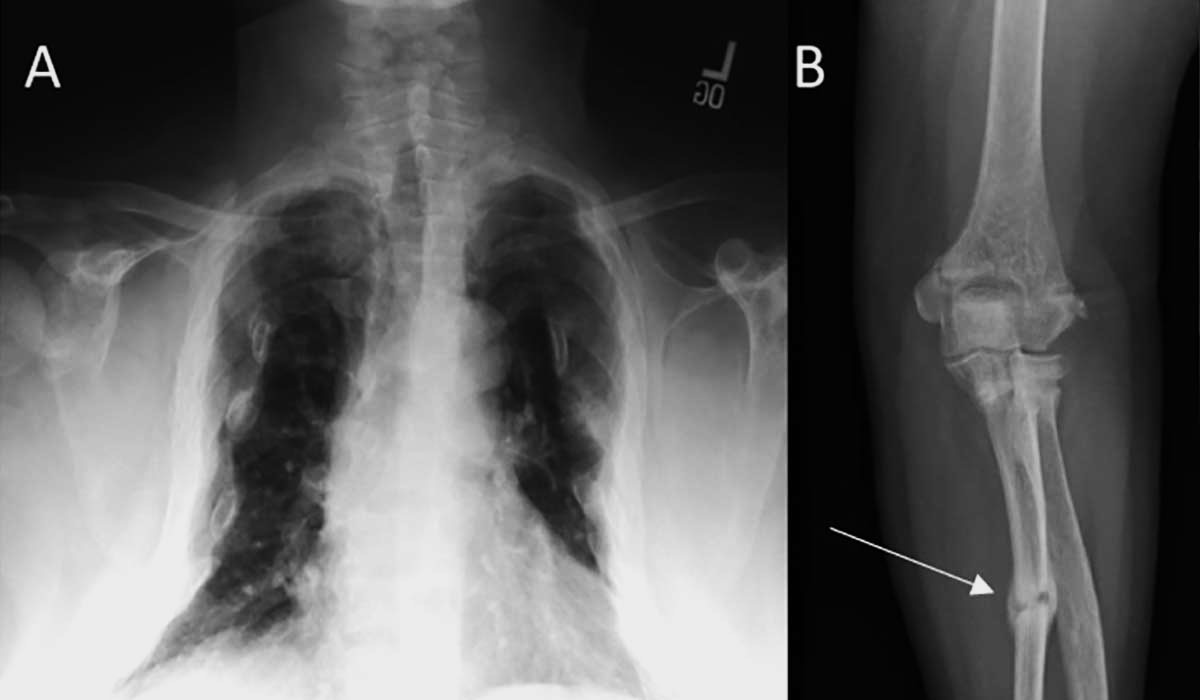
Oncogenic osteomalacia is a rare condition that weakens bones and causes them to fracture easily. It’s often linked to small, slow-growing tumors that produce substances disrupting normal bone formation. These tumors can be tricky to find, making diagnosis challenging. Symptoms include bone pain, muscle weakness, and difficulty walking. Treatment usually involves locating and removing the tumor, which often leads to a full recovery. Understanding this condition is crucial for early detection and effective management. Here, we’ll share 30 facts about oncogenic osteomalacia to help you grasp its causes, symptoms, and treatments better.
Key Takeaways:
- Oncogenic Osteomalacia is a rare bone disorder caused by tumors, leading to bone pain and weakness. Early diagnosis and tumor removal are crucial for effective treatment and improved quality of life.
- Patients with Oncogenic Osteomalacia may experience chronic pain, mobility issues, and emotional distress. Supportive care, regular monitoring, and patient education are essential for managing the condition and improving overall well-being.
What is Oncogenic Osteomalacia?
Oncogenic osteomalacia, also known as tumor-induced osteomalacia, is a rare disorder that affects bone metabolism. It is caused by tumors that produce substances leading to weakened bones. Here are some intriguing facts about this condition.
-
Rare Disorder: Oncogenic osteomalacia is extremely rare, with only a few hundred cases reported worldwide.
-
Tumor-Induced: The condition is caused by benign tumors, often found in the skin, muscles, or bones.
-
Phosphaturic Mesenchymal Tumors: These tumors are typically phosphaturic mesenchymal tumors, which secrete fibroblast growth factor 23 (FGF23).
-
FGF23 Role: FGF23 plays a crucial role in regulating phosphate levels in the body, leading to phosphate wasting in the kidneys.
-
Symptoms: Common symptoms include bone pain, muscle weakness, and fractures.
-
Misdiagnosis: Due to its rarity, oncogenic osteomalacia is often misdiagnosed as other bone disorders like osteoporosis.
-
Age of Onset: It can occur at any age but is most commonly diagnosed in adults.
-
Gender Prevalence: Both men and women are equally affected by this condition.
Diagnosis of Oncogenic Osteomalacia
Diagnosing oncogenic osteomalacia can be challenging due to its rarity and non-specific symptoms. Here are some key facts about its diagnosis.
-
Blood Tests: Blood tests often reveal low phosphate levels and elevated FGF23 levels.
-
Urine Tests: Urine tests show increased phosphate excretion.
-
Bone Biopsy: A bone biopsy may be performed to assess bone health and rule out other conditions.
-
Imaging Techniques: Imaging techniques like MRI, CT scans, and PET scans help locate the tumor causing the condition.
-
Octreotide Scans: Octreotide scans, which use a radioactive tracer, can also help identify the tumor.
-
Delayed Diagnosis: Diagnosis is often delayed due to the non-specific nature of symptoms and the rarity of the condition.
-
Differential Diagnosis: It is important to differentiate oncogenic osteomalacia from other causes of bone pain and weakness.
Treatment Options for Oncogenic Osteomalacia
Once diagnosed, treating oncogenic osteomalacia involves addressing the underlying tumor and managing symptoms. Here are some treatment facts.
-
Surgical Removal: The primary treatment is surgical removal of the tumor, which often leads to a cure.
-
Tumor Localization: Accurate localization of the tumor is crucial for successful surgical removal.
-
Medical Management: If the tumor cannot be located or removed, medical management includes phosphate supplements and active vitamin D.
-
Monitoring: Regular monitoring of phosphate levels and bone health is essential for managing the condition.
-
Radiation Therapy: In some cases, radiation therapy may be used if the tumor cannot be surgically removed.
-
Recurrence: Tumors can recur, so long-term follow-up is necessary.
-
Bone Health: Maintaining bone health through diet, exercise, and supplements is important for patients.
Impact on Quality of Life
Oncogenic osteomalacia can significantly impact a person's quality of life. Here are some facts about its effects.
-
Chronic Pain: Chronic bone pain can affect daily activities and overall well-being.
-
Mobility Issues: Muscle weakness and fractures can lead to mobility issues and a higher risk of falls.
-
Emotional Impact: The condition can lead to emotional distress due to chronic pain and physical limitations.
-
Work Limitations: Many patients may face limitations in their work life due to physical symptoms.
-
Support Systems: Having a strong support system, including family, friends, and healthcare providers, is crucial for managing the condition.
-
Physical Therapy: Physical therapy can help improve mobility and strength.
-
Pain Management: Effective pain management strategies are essential for improving quality of life.
-
Patient Education: Educating patients about their condition and treatment options empowers them to manage their health better.
Final Thoughts on Oncogenic Osteomalacia
Oncogenic osteomalacia, a rare disorder, often goes unnoticed due to its subtle symptoms. Understanding its causes, symptoms, and treatment options can make a significant difference in managing this condition. Early diagnosis is crucial since it can prevent further complications and improve quality of life. Phosphaturic mesenchymal tumors are the primary culprits, leading to phosphate loss and weakened bones. Treatment usually involves surgical removal of the tumor, which often results in a complete cure. For those who can't undergo surgery, medications and supplements can help manage symptoms. Raising awareness about this condition can lead to better outcomes for those affected. If you or someone you know shows signs of unexplained bone pain or muscle weakness, consult a healthcare professional. Knowledge is power, and being informed can lead to better health decisions.
Frequently Asked Questions
Was this page helpful?
Our commitment to delivering trustworthy and engaging content is at the heart of what we do. Each fact on our site is contributed by real users like you, bringing a wealth of diverse insights and information. To ensure the highest standards of accuracy and reliability, our dedicated editors meticulously review each submission. This process guarantees that the facts we share are not only fascinating but also credible. Trust in our commitment to quality and authenticity as you explore and learn with us.
